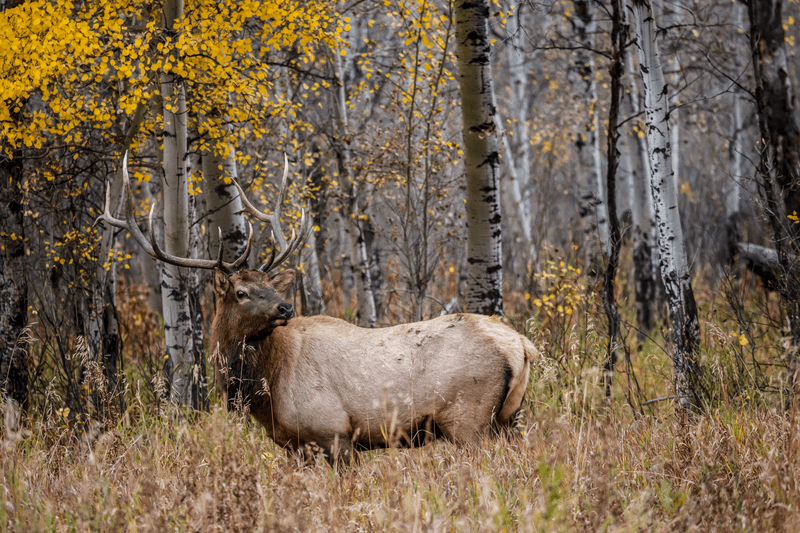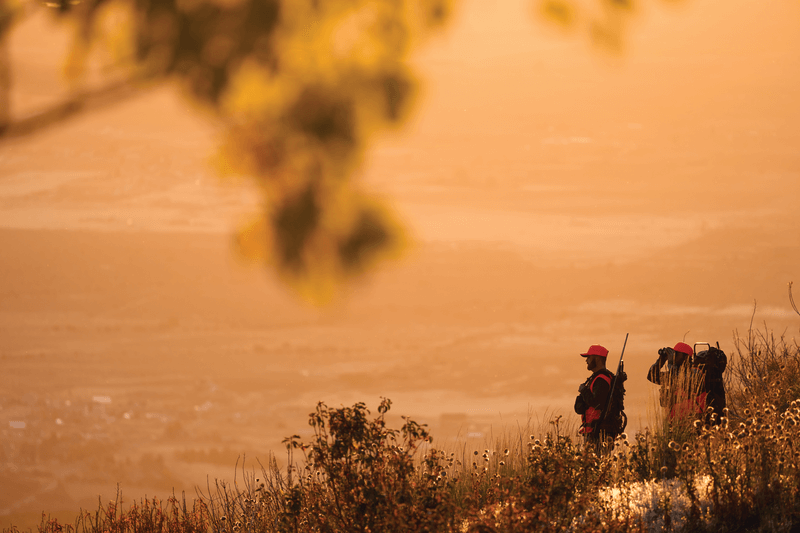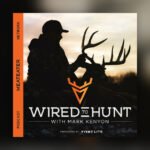Elk Tips for Beginners with Fred Eichler
Fred Eichler provides tips on elk hunting to help beginners increase their chances of being in the 15% of hunters coming back from a successful elk hunt.
Video Transcription
Hi, I’m Fred Eichler, and one thing I get a lot is people asking me for elk tips for beginners. People that want to get into elk hunting or maybe they’re white tail hunters and they decided that they want to head out west and try their hand at elk hunting. Well first, I want to let you know that if you’ve been unsuccessful, or if you go out and are unsuccessful don’t feel bad. Most people are. In the west, the average success rate runs around 15%. So, if you want to be in that low percentage there’s a few things you want to know.
Get Away from the Trailheads
Public land is a great place to go out and do some elk hunting. Pouring over maps and figuring out how to get away from the trailheads. Most of the time when I’ve harvested elk in public land in Colorado, it’s been over two miles from the beginning of a trailhead where other people could park, because to be perfectly honest most people don’t want to go that far and work that hard to get an elk. So, you want to have a good pack, you want to learn a little bit about woodsmanship if you don’t know it so you’re comfortable camping or hiking on your own in the backcountry, and then you want to know some tips about elk hunting. And some of the tips that I’m going to tell you are pretty basic.
Be Aware of Wind Direction
A lot of white tail hunters already know it but it’s even more important for elk. In other words when I’m white tail hunting it’s a little easier for me to control my scent. I can keep my clothes in a bag or I can drive you know 100 yards and then you know to my tree stand or close to it put my clothes on and I’m only going to walk 100 or 200 yards to my stand and I’m not going to get too sweaty. When you’re elk hunting especially early season, archery elk for example, muzzle loader elk, and even the first you know beginning of the rifle seasons, it’s usually pretty hot so you’re usually sweating quite a bit. Basically if an elk is downwind they’re going to smell you. So always carry a quick and easy wind detector.
The winds and the thermals and the mountains are constantly changing so you can’t rely on them. A lot of areas you can go, well the wind here is predominantly out of the northwest. Well when you’re elk hunting and you’re going up and down little different draws and things like that, it can totally change. Now you can rely on the fact that normally in the mornings the wind is going down the mountain so the thermals are moving down. As it heats up as the sun comes out and the air heats up those thermals turn around and start going up. So that is one general rule of thumb that you can rely on.
The problem is when you start dropping into little canons and creek bottoms and things like that it totally changes. So one thing I tell everybody whether you’re a beginner or experienced is a wind detector or something you can check the wind constantly and I’m checking it when I’m elk hunting. Sometimes every 30 seconds or a minute when I’m guiding elk hunters because I have to know if an elk comes from this way is it going to wind us or if I heard an elk bugle over there can I move and set up on it. So a wind detector super super important.
Learn to Cow Call
Another thing that I tell people that are beginning elk hunters is everybody seeing the videos and the TV shows and I have to where somebody will call or they’ll rip out a bugle and this giant six by six bugles back and he walks right out in the middle of this huge open meadow and turns broad side. Well that’s just not real. That’s not real for public land hunters, and it’s honestly not real for the majority of the places on private land. A lot of the videos that you’ve seen and I’ve seen are on super expensive they’re places that the majority of us will never get to hunt. I know that because every once in a while I’ve gotten to hunt places like that, and it is not like where I hunt usually and it’s definitely not like the public land that I guide hunters on. So I tell guys don’t even worry about a bugle because when you bugle you can intimidate as many elk as you can attract. It’s just like you’ve got you’ve got a bull that’s either going to fight you or he’s going to run off. I don’t want a bull to run off even the little ones. I want to attract all the bulls so I can make the decision. I want to see them and decide if I want to shoot them or not and sometimes even larger bulls, they’re just not dominant bulls. They may not want to fight. They may they’re lovers not fighters. So they’re going to they hear another bull or dominant bull bugling, they’re going to go the other way. So although bugling is fun it’s fun to practice in the house or in your car going to work.
Read more: To Call, or Not to Call?
I tell people the best thing you can do is learn to cow call. So there’s a bunch of different cow calls on the market. Bass Pro and Cabela’s is carrying a ton of different ones from all kinds of different manufacturers. Some of the easier ones are the handheld ones that have a reed attached to them. You can adjust a band and you literally just blow through them. So you can take and almost anybody can blow a call like that relatively quickly. I suggest picking up an elk tape. Listen to some different YouTubes. I’ve got some shows out there and matter of fact I have a YouTube video that shows all kinds of different elk vocalizations you can hear out bugling and cow calling.

A diaphragm is really nice too because one it’s smaller but you can also vary and do a lot of different things with a diaphragm. So I like a diaphragm a lot. Now you’ll notice I’m varying those cow calls. They’re not always the same distance or the same length and volume. An elk cow makes all kinds of different noises and a lot of times when she’s in the peak of estrus or she’s really looking for some some company she’ll kind of stretch those cow calls out. So I use a small sequence a couple cow calls, and it doesn’t matter you don’t have to be a good elk caller. Some elk calls sound horrible like actual elk in the field. Some of them sound horrible like they have a stick in their throat. So you don’t have to sound perfect. You don’t have to sound exactly like the video, because elk like people have all kinds of different voices, cadences, volume, and things like that. But if you could make four to six something that sounds similar to a cow call and then just wait for 20 to 30 minutes and see if an elk comes in for a beginner that’s going to be one of your best bets. It’s a great way to effectively call an elk.
Be Patient After Cow Calling
A lot of people call and then move on and they don’t realize especially on public land that a bull or another cow elk may be slipping in quietly, slowly to see if it’s legit. But you’re gone when they come in. So, I wish I would I wish I could admit to you how many times I’ve stood up too soon myself and blown elk out, but it would be embarrassing. It’s happened to me a lot. So for beginners, I say learn from my mistakes, make a few calls sit 20 to 30 minutes. Just make sure you’re in an area with elk learn to read some sign. If you’re not seeing any fresh sign fresh scat fresh tracks well then you’re calling blind and there’s nothing close and nothing’s going to come in. But if you’re in a fresh sign fresh track fresh scat then a few cow calls waiting 20 to 30 minutes, move in half a mile, three quarters of a mile, and try it again. That is one of the most effective ways to call elk in for beginners.
Don’t Overlook Treestand Hunting
Now another thing you don’t want to overlook is the eastern style of hunting which is hunting out of tree stands. A tree stand or the tree saddles type things that they have where you can harness in and just instead of carrying a whole tree stand you can set up with that. But there’s light tree stands that you can pick up.
There’s all kinds of options that you can hike in and hunt over water holes super effective way in the west to hunt elk. You can hunt over wallows that’s another effective way to hunt in the west. Hunting active trails, water holes, and wallows out of a tree stand or ground blind or literally just sitting in full camo and waiting by those areas can be one of the most effective ways to hunt elk, and I’ve harvested a lot of elk that way.
Well I’ve talked to a lot of other guides and their statistics match up almost exactly with mine. For me I’m one out of 10 when I’m calling and I like to think I’m a pretty good caller. So that means for every 10 elk I call into bow range, my clients or me shoot one of them. When an elk comes into a call when a bull for example comes into a call it’s looking to either fight, or it’s looking for love one or the other. So if it here’s a cow elk call it may think there’s another bull over there with that cow, and he’s coming over to run him off and take the cow or if he hears a bull bugle or even if the cow calls he thinks there may be a bull with her he’s running to run him off. So every single sense is alert. I mean literally everything so they’re trying to see you, hear you, smell you. Every sense is alert. Now when you’re set up on a trail and an elk just comes walking by you’ve got way better odds, because they’re not alert, they’re not as tense, they’re not coming in. You know exactly where they’re going to be they’re going to be at that water hole right there or they’re going to be at that wallow or they’re going to be walking down that trail at 20 yards. When you’re calling, that elk could come from 360 degrees. It could come in where you don’t want it to, it could come in from downwind, it could come in from upwind, it could come in and see you, it could get into a position where you can’t draw, it could spot you when you try and draw, but when you’ve got an elk walking down a trail or coming into a wallow or coming into a water hole, if you’re set up in a tree stand, you’ve got a huge advantage, because hopefully you’ve already played the wind you’re downwind and if they come in they’re in range you’ve got the advantage on the wind and you’ve got a calm elk.
So for odds I’m one out of 10 for elk to come into bow range when I’m calling getting them harvested, where I’m seven out of 10 for clients or myself when elk come in walking down a trail or coming into a water hole or coming into a wallow. That’s a pretty big difference in odds, so although I like talking about calling with people that are brand new to elk hunting, if somebody was to say, “Fred, 100% what is the best sure-fire way or the best odds of me getting an elk?” I would say get an active trail and set up over that. Get a lightweight tree stand pack it in just like you would white tail hunting, or I would say find an active water hole where there’s fresh tracks especially if the weather’s hot and dry and set up on that and that’s going to be one of your best ways to harvest an elk.

Get Familiar with Your GPS Maps and Understand the Terrain
So another thing that I advise beginners is to get familiar with onX or Hunt Stand or you know GPS Garmin where you can zoom up. It is a great way to find little springs, water holes where you can look and see natural funnels like oh wow there’s a bunch of brush here big mountain here big mountain here, and there’s a little slender piece of trees it goes through this pass that might be a good funnel for elk. So learn some of that stuff, and learn to be able to read it, but don’t even look within a mile or a mile a half of a parking area on public land that would be my advice. Start stretching it out a little bit further and be ready to do a little hiking if you want to be one of the 15% that harvests an elk in most western states, because that’s about the odds is 15%.


